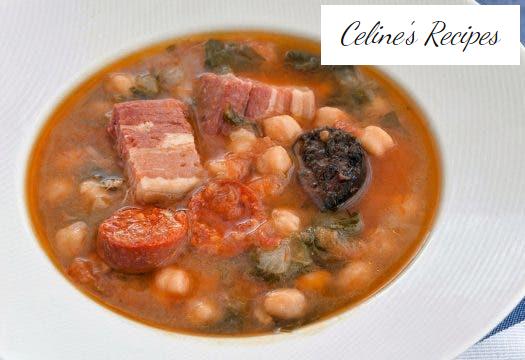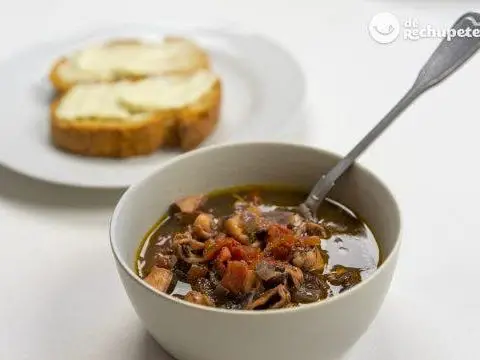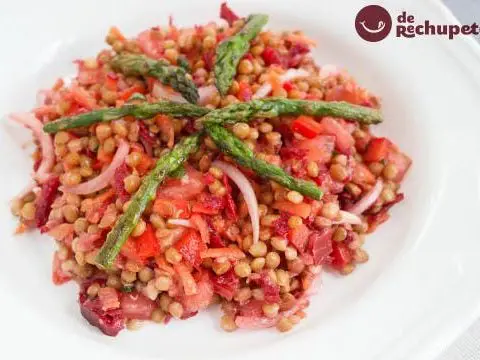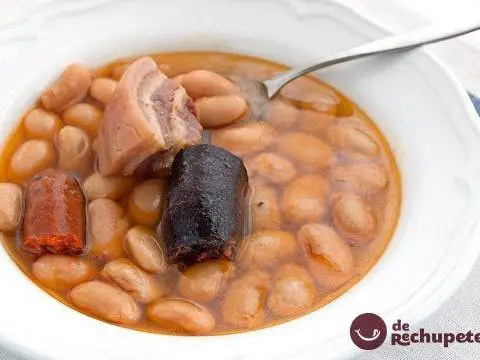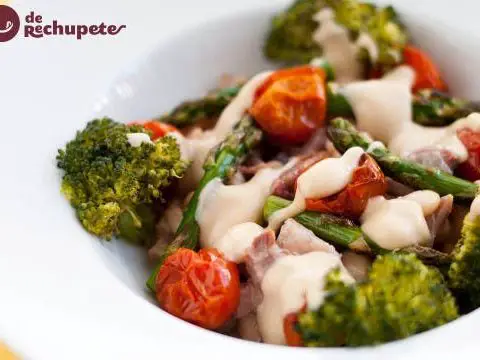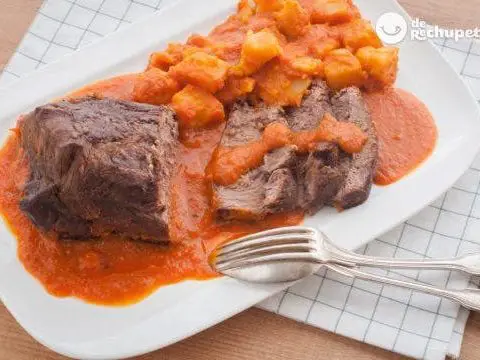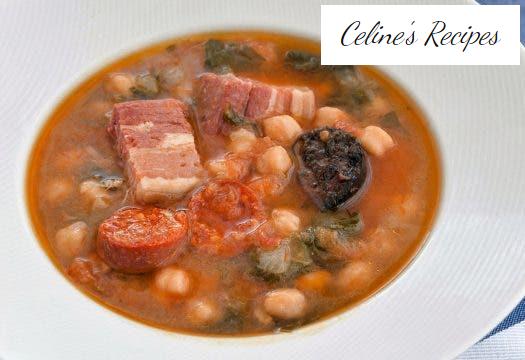
Info.
- Easy
- 70 minutes
- For 6 people
- 0.8 € / person
How to prepare a chickpea and chorizo stew . Cooking stews today I present you a traditional homemade stew . A recipe with chickpeas that my grandmother prepared for us many times in town.
An ideal dish as a spoon dish as soon as that messy time full of fog, rain and cold appears. After trying the first tablespoon it goes one after the other and I assure you that you will repeat.
This stew is common at Easter and the sacraments (meat) are usually replaced by cod. Although it is a timeless stew that goes well throughout the year. To be honest, I like it much more with sausage and blood sausage, but it is incredible in both ways so I leave it to you to choose.
The origin of this recipe is attributed to the French who described the stew as a stew made up of cooked meats, tubers and legumes. It is a very common recipe at Easter, although if you want the authentic vigil stew you can see it on the blog.
Cod as the main ingredient became popular thanks to the spread in Spain of the salting techniques used by the Jews. In the stew almost any ingredient fits, so in addition to chickpeas we find spinach or chard, and meat or fish depending on the chosen occasion.
Stews are a star dish in Autumn, very close to good lentils with chorizo or a chickpea casserole with chorizo . The two tips to make this stew yummy are to use quality ingredients and spend time and patience.
Before cooking. Preparation of chick peas
- One of the important steps is the choice of chickpeas, you have them as a dried or already cooked legume and you can find various sizes.
- I like Castilian chickpeas of large size, spherical shape and a characteristic yellowish color. I recommend using dry chickpeas because they allow you to control the salt point of the stew by avoiding the treatments that canned foods bring. I also prefer not to use preservative-treated chickpeas.
- The day before we put the chickpeas in lukewarm water with a teaspoon of bicarbonate or a handful of salt and we leave them to soak overnight, usually 12 hours. It is important to wash them afterwards to remove possible impurities and that you do not strain any spoiled chickpea that can spoil a tooth, I say this from experience.
- We will only have to drain and set aside until the time to prepare the stew.
- If you are going to use them already cooked, wash them very well without leaving any of the gelatin that surrounds the chickpea and add them at the end of cooking the stew, just so that they are well impregnated with the flavor of the rest of the ingredients. I must admit that this type of chickpea already cooked and packaged in a glass jar saves a lot of time in the kitchen, although it is better to use them for other types of dishes such as a chickpea hummus or a salad.
Preparation of the chickpea and spinach stew
- Chop the onion and garlic into very small pieces so that they melt in the cooking. In the end we will hardly notice any texture of any of the ingredients but its flavor. As garlic many people do not like to find it on the plate you can pour it whole and remove it halfway through cooking.
- Peel and chop the tomatoes into two parts.
- In a saucepan we pour a good jet of oil, onions and garlic cloves. We fry everything for 10 minutes so that the flavors mix well. Add the tomato and the bay leaf. We also fry for 2-3 minutes.
- Add a generous tablespoon of La Vera paprika. We remove with a wooden spoon quickly and add the drained chickpeas. Stir again so that everything comes together well (3 minutes).
Stew cooking and final presentation
- We cover with cold water (important so that it begins to boil slowly) until the casserole is almost full, remember that we have to add more ingredients.
- When it begins to boil, lower the heat so that it slows down and does not break the vegetables.
- When it takes 1/2 hour cooking we add salt and pepper to taste.
- We add 2 sausages, a blood sausage and a piece of bacon. Let them cook slowly at medium temperature for the next 20 minutes. Stir occasionally with a wooden spoon.
- Next we remove the sausages, the blood sausage and bacon so that the stew does not have as much fat.
- In another casserole we blanch the spinach to remove a bit of the bitterness (I love that little bit of spice, but I recognize that it is strong).
- To blanch we put boiling water with salt and we put in and take out the vegetables. I advise you to use frozen spinach to avoid remnants of soil.
- On a board, chop the blanched spinach with a large knife and add them in the last 10-15 minutes of cooking the porridge. It should be simmering from time to time in case they don’t need more cooking.
- To serve the best is a deep dish with the stew. The chorizo, blood sausage and bacon on top in slices and pieces, that easy.
Be sure to enjoy all the stews with or without legumes that you have on the blog. You can see all the photos of the step by step of this chickpea stew in this album.
Tips for a chickpea chowder stew
- For vegetarians the recipe is the same but without meat. Of course, as an essential ingredient we can use algae, very good for chickpeas to have better digestion and also cook before.
- This recipe is very versatile for day to day because it can be taken as a single dish, it feels great in cold weather and it also holds up very well in the fridge.
- If you can prepare the soup the day before, it will be even richer than just made. Here I leave you my tuned stew with its good chorizo to compensate for the health of the vegetables and legumes.
- If you add a handful of rice, they are already coming out.
- We can also present accompanying the stew with fried bread croutons. Delicious.
